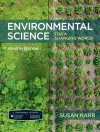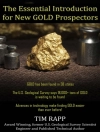There are only few discoveries and new technologies in physical sciences that have the potential to dramatically alter and revolutionize our electronic world. Topological insulators are one of them. The present book for the first time provides a full overview and in-depth knowledge about this hot topic in materials science and condensed matter physics. Techniques such as angle-resolved photoemission spectrometry (ARPES), advanced solid-state Nuclear Magnetic Resonance (NMR) or scanning-tunnel microscopy (STM) together with key principles of topological insulators such as spin-locked electronic states, the Dirac point, quantum Hall effects and Majorana fermions are illuminated in individual chapters and are described in a clear and logical form. Written by an international team of experts, many of them directly involved in the very first discovery of topological insulators, the book provides the readers with the knowledge they need to understand the electronic behavior of these unique materials. Being more than a reference work, this book is essential for newcomers and advanced researchers working in the field of topological insulators.
Table of Content
Preface
FUNDAMENTALS
Quantum Spin Hall Effect and Topological Insulators
Hybridization of Topological Surface States and Emergent States
Topological insulators in Two Dimensions
Topological Insulators, Topological Dirac semimetals, Topological Crystalline Insulators, and Topological Kondo Insulators
MATERIALS AND STRUCTURES
Ab Initio Calculations of Two-Dimensional Topological Insulators
Density Functional Theory Calculations of Topological Insulators
Many-Body Effects in the Electronic Structure of Topological Insulators
Surface Electronic Structure of Topological Insulators
Probing Topological Insulator Surface States by Scanning Tunneling Microscope
Growth and Characterization of Topological Insulators
ELECTRONIC CHARACTERIZATION AND TRANSPORT PHENOMENA
Topological Insulator Nanostructures
Topological Insulator Thin Films and Heterostructures: Epitaxial Growth, Transport and Magnetism
Weak Antilocalization Effect, Quantum Oscillation, and Superconducting Proximity Effect in 3D Topological Insulators
Quantum Anomalous Hall Effect
Interaction Effects on Transport in Majorana Nanowires
Index
About the author
Frank Ortmann is Head of the Computational Nanoelectronics group at the Institute for Materials Science at the Technische Universität Dresden, Germany. He is specialized on large-scale electronic transport simulations linked with ab initio electronic structure methods and on nanoelectronics of materials. This includes Topological Insulators, 2D Materials and Organic Semiconductors. Frank Ortmann was awarded with the Faculty Prize of the University of Jena, received a Marie Curie individual fellowship from the European Commission and in 2014 he received a prestigious Emmy Noether Young Investigator grant from the Deutsche Forschungsgemeinschaft (DFG). He is author of several articles in high-impact journals.
Stephan Roche is an ICREA Research Professor and Head of the group Theoretical and Computational Nanoscience at the Institut Catala de Nanociencia i Nanotecnologia (ICN2) in Barcelona, Spain. He is a theoretician with more than twenty years of experience concerning the study of transport theory of low-dimensional systems, including graphene and topological insulators. His current research activities focus on the exploration of fundamental properties of spin transport phenomena in Dirac Matter, and searching practical solutions to engineer spin manipulation technologies based on these unique materials. S. Roche has been awarded the Friedrich Wilhelm Bessel prize by the Alexander Von-Humboldt Foundation (Germany) in 2009, and since 2011, he is engaged in the Graphene Flagship project, currently as a co-leader of the Graphene spintronics workpackage.
Sergio O. Valenzuela is an ICREA Research Professor and Head of the group Physics and Engineering of Nanodevices at the Institut Catala de Nanociencia I Nanotecnologia (ICN2) in Barcelona, Spain. He is an experimental physicist with more than fifteen years of experience in condensed matter research covering a broad range of topics from superconductivity and quantum computation to nanoelectromechanical systems and spin electronics. His current research interests focus on the thermal, thermoelectric, and spin-transport properties of 3-dimensional topological insulators and of 2-dimensional materials, such as graphene. In 2009, he was awarded the Young Scientist Medal of the International Union of Pure and Applied Physics and, in 2012, received a European Research Council Starting Grant.












